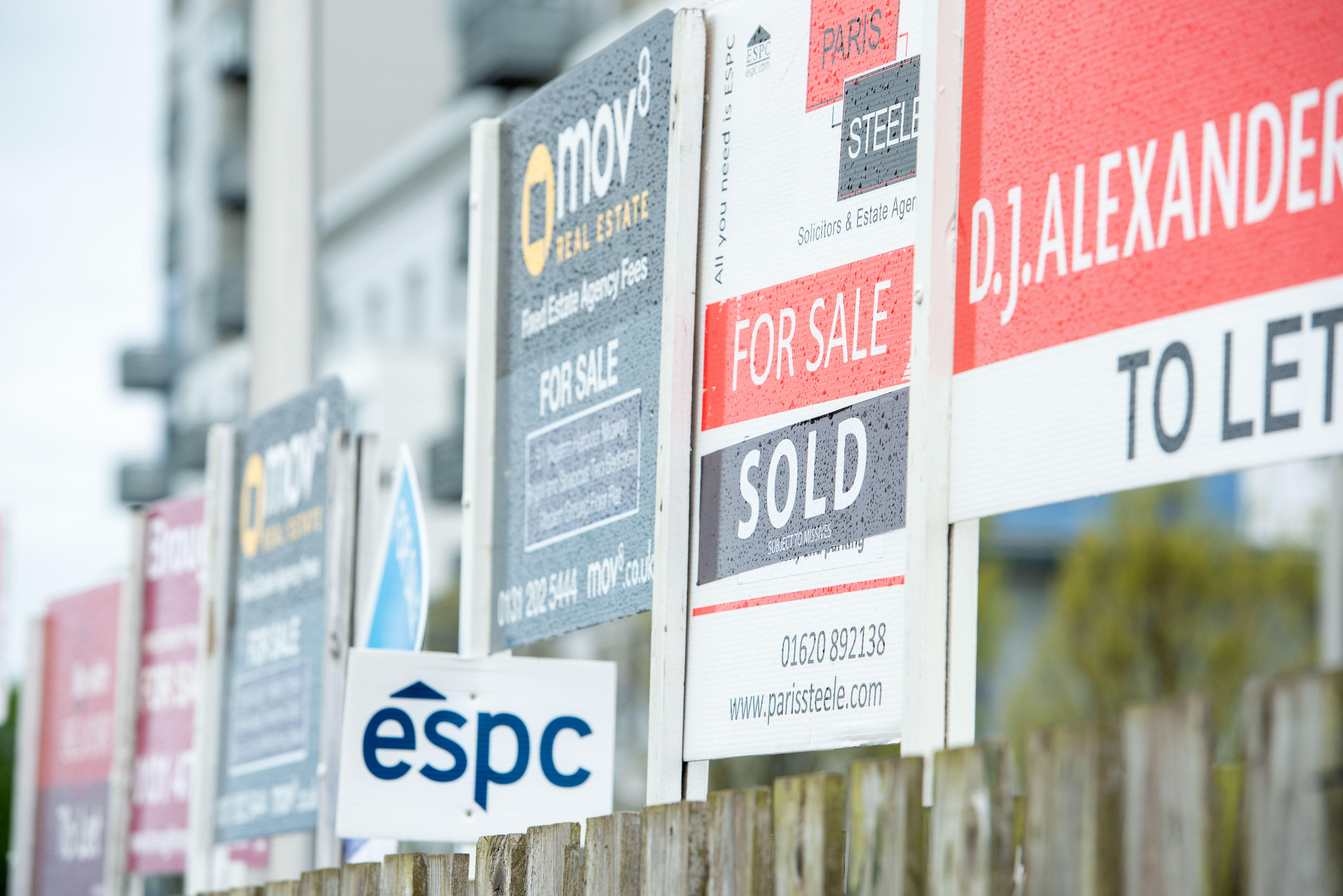What's next for house prices? Loss of momentum, discounts — and it's only just begun
Six months on from Liz Truss's disastrous stint as prime minister, the fallout is still being felt in the property market. Yet the overwhelming sentiment is of cautious optimism as Spring brings all sorts of positive signs, as Annabel Dixon explains.


Asking prices of homes coming onto the market edge down
Two-fifths of sellers accept discounts of more than 5% on their original asking price
House prices in June under pressure
'The last time we will see even a modest increase in house prices for some time'
The impact of higher rates has yet to be fully reflected in housing market activity
It wasn’t that long ago that there was a sense of cautious optimism in the housing market. But that could prove to be short-lived.
A slight fall in average asking prices in June suggests that the ‘belated spring price bounce has quickly turned into an earlier than usual summer slowdown’, says Tim Bannister, Rightmove’s director of property science, ominously. And on Friday, Halifax reported their latest figures showing a 2.7% year-on-year drop in house prices — the biggest such decrease since 2011.
The £82 drop in average new seller asking prices in June may not be a princely sum — it doesn't even register on the percentage scale, coming out at 0.0%.
But it’s significant nonetheless: this is the first monthly drop in new asking prices this year, and the first in the month of June since 2017, the Rightmove's latest house price index reveals.
More sellers accepting larger discounts
It’s not just asking prices of homes coming onto the market that are edging down. So are the prices that sellers agree to get a sale over the line. Sellers are accepting offers that are, on average, 3.8% below the initial asking price, according to Zoopla’s latest house price index.
There’s been a jump in the proportion of sellers accepting bigger discounts for their homes too, Zoopla adds. More than two-fifths (42%) of sellers are accepting discounts of more than 5% on their original asking price — the highest level since 2018. And 15% are accepting discounts of more than 10%.
It appears that buyers are driving a harder bargain as higher mortgage rates and continued cost of living pressures squeeze household budgets further.
Exquisite houses, the beauty of Nature, and how to get the most from your life, straight to your inbox.
House prices under pressure
The house price indices each have their own take on what’s happening to house prices, a phenomenon we explained in a previous Property Talk about why all the house price indices don't agree with each other.
Zoopla says that annual house price growth - which the portal says is based on sold prices, mortgage valuations and data for agreed sales — has shown a ‘rapid loss of momentum’ over the last year, slowing to 1.2% in May.
Elsewhere, Nationwide reports that house prices were ‘relatively stable’ in June. Values rose by a modest 0.1% last month and fell 3.5% from June 2022.
And Halifax shows that house prices edged down 0.1% in June, a third consecutive monthly decline. House prices were down 2.6% year-on-year, the largest annual fall in 12 years.
Kim Kinnaird, director, Halifax Mortgages, points out that the lender’s latest figures do suggest a degree of stability in the face of economic uncertainty, and the volume of mortgage applications held up well last month, particularly from first-time buyers.
Buyer appetite a mixed picture
There’s a mixed picture when it comes to other housing market activity. Zoopla says there were 14% fewer buyers in June compared with the five-year average as higher mortgage rates take their toll on demand. Yet the number of sales agreed during the month was 8% above the five-year average, suggesting that buyers who have locked in cheaper finance are keen to press ahead.
Meanwhile, fellow property portal Rightmove reveals that buyer demand in the first half of June was actually 6% higher than the same fortnight in 2019. And the number of sales agreed during the first two weeks of June was 6% lower than the same time period in 2019.

This latest raft of housing market updates come as the Bank of England increased interest rates for the 13th time in a row and mortgage rates surged. But it'll take time for the impact of these economic headwinds to be fully reflected in house prices and other market activity.
So what can we draw from all of this? Kinnaird warns that the housing market remains sensitive to volatility in borrowing costs, adding: ‘The resulting squeeze on affordability will inevitably act as a brake on demand, as buyers consider what they can realistically afford to offer.’
Commenting on Nationwide’s house price index, Karen Noye, mortgage expert at wealth management firm Quilter, warns: ‘The higher interest rates that have replaced them [lower rates] are likely to make moving or buying a first home unaffordable for many, so we can expect a downtick in new applications and the majority of business to come from those needing to remortgage.
‘This is likely the last time we will see even a modest increase in house prices for some time given the recent turbulence in the mortgage market.’
'Inflation proving stickier than expected'
How deep or persistent the downturn in house prices will be remains hard to predict, says Kinnaird.
‘Consumer price inflation is likely to come down in the near term as energy and food prices look set to reverse their steep rises, but core inflation is clearly proving stickier than originally expected,’ explains Kinnaird.
‘With markets now forecasting a peak in Bank Rate of over 6%, the likelihood is that mortgage rates will remain higher for longer, and the squeeze on household finances will continue to put downward pressure on house prices over the coming year.’
So what of that soft landing that Nationwide often refers to? Nationwide’s chief economist, Robert Gardner, believes ‘a relatively soft landing’ is still possible — if the broader economy performs as it (and most other forecasters) expect.
‘Labour market conditions are expected to remain relatively robust, with the unemployment rate remaining below 5%, while income growth is projected to remain solid. With Bank Rate likely to peak in the quarters ahead, longer term interest rates should also start to fall back,’ Gardner explains.
‘As a result, a combination of healthy rates of income growth and modest price declines should improve affordability over time, especially if mortgage rates moderate.’

Credit: Getty
Why are there so many different ways of measuring house prices?
From the official government UK HPI to Halifax, Rightmove and more, no week seems to go by without a new

Credit: Ian Georgeson / Alamy Stock Photo
Property Talk: 1980s nostalgia is great... but not when it's about the property market
A dose of 1980s cultural nostalgia is always welcome, but economic nostalgia? No thanks. Inflation and interest rates are heading

